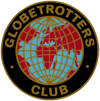On a particularly warm and humid Christmas Eve Santa Claus came back to Mikindani for the third year running. Returning volunteer to the Trade Aid project Matt Maddocks once again donned the red robe, festive hat and fake beard to bring some excitement to the children of Mikindani. This time around, the Bedford army truck was adapted to become his sleigh by the decorative efforts of Emmanuel at the Boma. As we set off for an afternoon tour of the village, everything seemed quiet… was about to change.
The sleigh ride was accompanied by the sound of cheesy Tanzanian pop music and, having rented the most powerful sound system south of Dar, children all over heard us coming and came running. There were handfuls of sweets for the children, who followed the sleigh as it made its way around Mikindani and then headed on into Mtwara. Many of them broke into spontaneous dance-mode when we approached. As we made our way down to the far end of town I saw a large woman wade through the throng of children like a massive battering ram, take off her headscarf and try to use it as a net to catch all of the sweets. We tried to avoid her reach to get some sweets to the little ones, but she clearly had to satisfy her sugar fix and blighted our generosity for a few minutes. The atmosphere was jubilant and everyone was waving and laughing. Matt was relishing the role and the sight of him dancing on the back of the truck in front of hundreds of people is one I will not soon forget. When he then turned his back and proceeded to shake his derriere in true African style there were screams of delight and laughter from the crowd.
We went up the main road towards the boatyard, before looping round to Jangwani Street by the fish market. In this densely populated area the number of kids swelled and we had more than six hundred people following the sleigh. We then made our way towards the market and veered off to Haikata, where we were briefly attacked by a swarm of bees (not from the Boma hive!) before returning to Bomani Street. We passed the Trade Aid house and made our way in to Mtwara from there. Apart from subsequently breaking down in Mtwara whilst dressed like a bunch of prats, the event was a complete success. It was great PR, although, it being in Mikindani with a majority Muslim population, I did hear people asking each other what the significance of a ‘fat red bloke with a beard’ was. Matt was the star of the show and he pulled off a great performance; one that, dancing in front of so many people, most of us pusillanimous souls could only muster after three triple whiskeys and a jug of Stella. It was a great day for all and no doubt the children of Mikindani will look forward to the event next year…
For more information about Trade Aid, volunteers and their work, please visit their website: www.mikindani.com

 In 1992 Robert was the keynote speaker at the
first Earth Summit in Rio and spoke about the rubbish
problem in Antarctica. With their approval he then set up a
project to do something about it, choosing the Russian Base
of Bellingshausen, as it was one of the worse areas. Also,
it was accessible to visiting ships and had a runway
nearby, allowing both easy access for research into the
removal and aiding the difficult logistics.
In 1992 Robert was the keynote speaker at the
first Earth Summit in Rio and spoke about the rubbish
problem in Antarctica. With their approval he then set up a
project to do something about it, choosing the Russian Base
of Bellingshausen, as it was one of the worse areas. Also,
it was accessible to visiting ships and had a runway
nearby, allowing both easy access for research into the
removal and aiding the difficult logistics.
 South Georgia is truly one of the world’s
most spectacular wildlife habitats. This is mostly due to
its desolation and the fact that man finds it so very hard
to reach it – even in this day and age.
South Georgia is truly one of the world’s
most spectacular wildlife habitats. This is mostly due to
its desolation and the fact that man finds it so very hard
to reach it – even in this day and age.